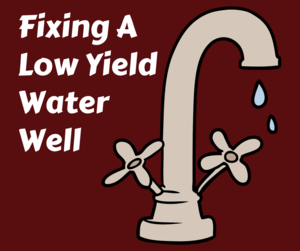CALL TODAY 1-800-441-6281
CALL TODAY 1-800-441-6281

Pesticides and Well Water
- Tags:
- water contamination
Pesticides are used for a variety of purposes in both suburban and rural communities. Surface water runoff can carry pesticides from agricultural fields, golf courses and park into lakes, streams and groundwater. Improperly disposed pesticides can also flow into water sources. Rain and snow can further expand the contamination into snow. These pesticides can end up in groundwater, especially if the well is near a location where pesticides are regularly used.
Testing for pesticides in your home’s water supply is the only way to ensure these chemicals are present. While public water systems regularly test for chemical and other contaminants, it’s the responsibility of the homeowner to make sure the family water well is free from contamination and safe to drink.
What Are Pesticides?
Pesticides include a large group of chemicals used in agriculture and residential settings to control plant and animal infestation. Pesticides can range from herbicides to control weeds and invasive species, insecticides to kills pests, nematocides to kill worms and fungicides to eliminate molds and mildew.
Some pesticides will remain in the groundwater and soil for a long time because they do not break down easily in water. For example, the insecticide DDT was banned almost 20 years ago, but can still be found in trace levels in some groundwater.
ARE PESTICIDES HARMFUL TO MY HEALTH?
Health effects of pesticides vary depending on the type of pesticide, the concentration of the contaminant in your water, and how long a person has been consuming contaminated water. Acute pesticide poisoning symptoms may include headaches, dizziness, stomach and intestinal upset, numbness of extremities, spasms, convulsions and heart attacks.
The good news is that when pesticides are found, the level of the contaminant is usually low and is unlikely to cause harmful health effects. However, exposure over a long period of time is not fully understood, especially when you consider that there are about 50,000 different pesticides products used in the United States.
The U.S. Environmental Protection Agency (EPA) is working on revaluation of all pesticides registered before 1972 to bring them up to modern health standards. EPA also requires extensive testing of new products before they come on the market.
EVALUATING RISK AND WHEN TO TEST
The first step in concluding whether your well is at risk for pesticide contamination is to take a look at whether contamination has shown up in other wells near where you live. If pesticides were detected in the groundwater nearby, your well is at a higher risk for contamination.
Next, call a professional to inspect your well and well casing for proper, sanitary construction. A water well expert can also help you determine the depth of the well into the water table and determine if the construction makes it more susceptible to contamination.
Finally, test your water for nitrates. Higher levels of pesticides are often found in wells with high nitrate levels. A test that returns results high in nitrates, combined with a suspected pesticide contamination, can help you determine, with the help of a professional, what further testing is needed. Because testing for chemicals and pesticides can be expensive, narrowing down the likely contaminants will help save time and money.
If you want to filter out contaminants, you must decide if you want to treat the water at the point-of-entry or at the point-of-use. Treating water at the point-of-entry is often used when other minerals or contaminants are in the water, such as iron, manganese, bacteria or radon. Point-of-use systems can be used for removal of many contaminants, including pesticides.

